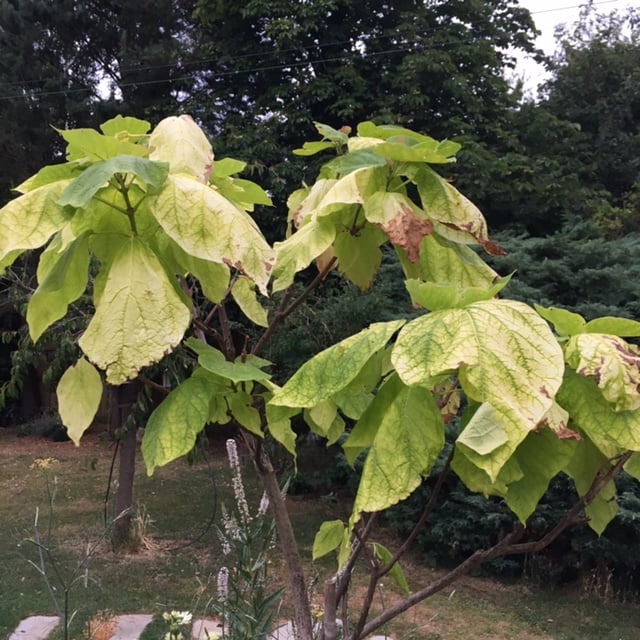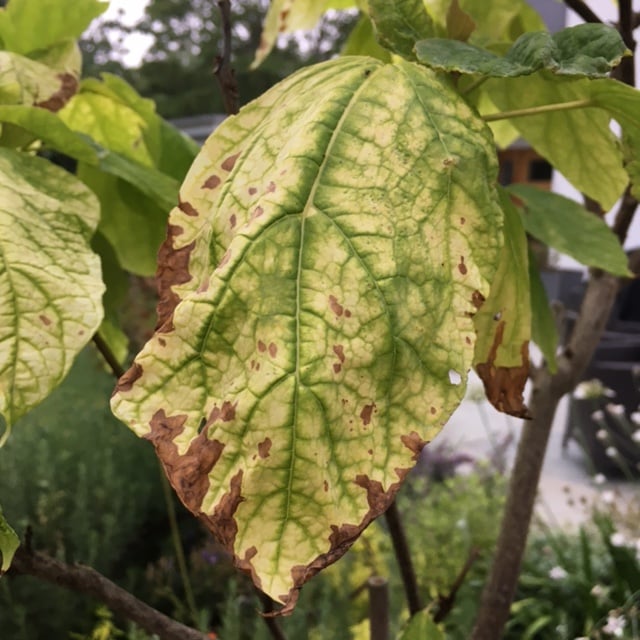Catalpa Aurea - how much water?
I planted a Catalpa Bignonioides Aurea earlier in the spring and, with the recent hot and dry weather, I’m not sure just how healthy it is and I don't have another one to compare it with. The leaves look very floppy during the day with far more visible veins than when they first opened. I’m not sure if it’s the temperature or the amount of water I’ve given it or this is normal (and the burned leaves I’m definitely putting down to the extreme temperatures).
I have been watering it every night or two for the last 3 weeks, and use a watering can full (4.5l) or more a time. This is much more than I would normally water a new plant but after a quick google, I found an article suggesting 20l every other day (barcham.co.uk). After overwatering and killing some yew plants, I’m wary that I might be using too much already but am happy to be corrected by some more knowledgable gardeners.


As further background, it's planted in full sun in a big hole filled with compost in a clay-based bed with a fairly neutral ph. North East England.
Posts